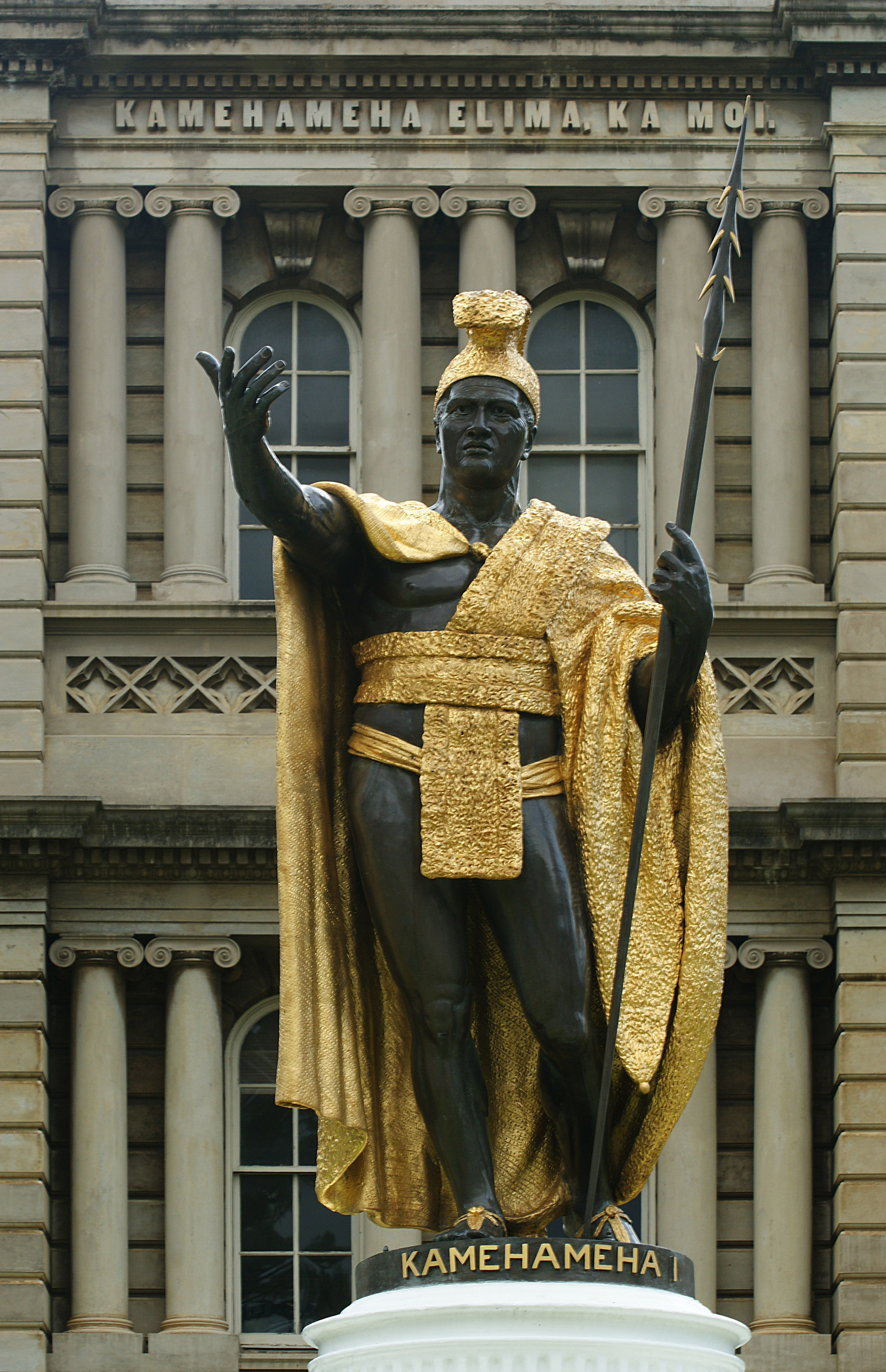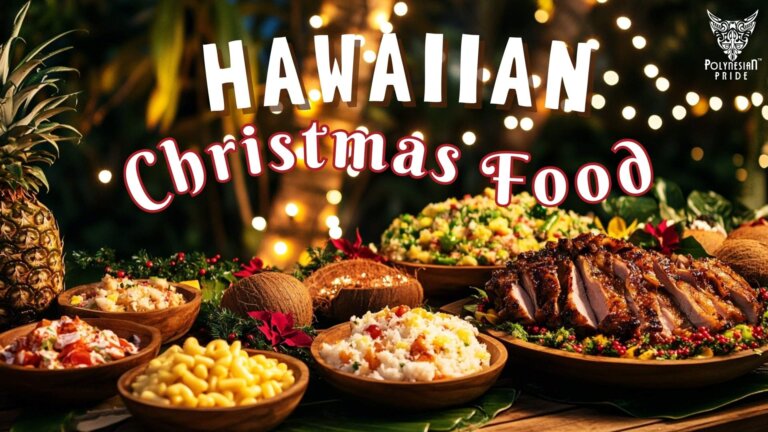More Than Paradise: Exploring the Rich Tapestry of Hawaiian Islands Culture and Nature

Introduction
Hawaiian Islands, often referred to as the “Paradise of the Pacific,” is a mesmerizing archipelago located in the central Pacific Ocean. Comprising a chain of volcanic islands, Hawaii is renowned for its stunning natural beauty, rich cultural heritage, and warm hospitality. As one of the most geographically isolated landmasses in the world, Hawaii holds a unique allure for travelers seeking a tropical escape unlike any other.
With its lush rainforests, pristine beaches, and dramatic landscapes, Hawaii offers an array of breathtaking experiences for visitors. From exploring active volcanoes to snorkeling in crystal-clear waters teeming with marine life, the islands beckon adventurers and nature enthusiasts alike.
But beyond its natural splendor, Hawaii boasts a vibrant tapestry of cultural traditions and history. From the ancient Polynesian settlers who first discovered these islands to the diverse communities that have shaped its modern identity, Hawaii’s cultural heritage is as diverse as its landscape.
In this introductory article, we will delve into the geographical features, historical milestones, cultural nuances, and standout attractions that define the essence of Hawaii. Join us on a journey to uncover the treasures of this enchanting destination nestled in the heart of the Pacific Ocean.
Geography
Location and Size
Hawaiian islands is located in the central Pacific Ocean, approximately 2,000 miles southwest of the mainland United States. It consists of a chain of volcanic islands spanning over 1,500 miles from the Big Island of Hawaii in the southeast to Kure Atoll in the northwest. The total land area of the Hawaiian Islands is approximately 6,423 square miles.
Archipelago Formation
The Hawaiian Islands were formed through volcanic activity over millions of years. The main islands, listed from southeast to northwest, are:
- Hawai’i (often referred to as the Big Island)
- Maui
- Oahu
- Kauai
- Molokai
- Lanai
- Niihau
- Kahoolawe
Additionally, there are numerous smaller islands, atolls, and islets scattered throughout the archipelago.

Volcanic Landscape
Hawaii’s volcanic landscape is characterized by rugged terrain, lush valleys, and towering volcanic peaks. The primary volcanic activity occurs on the Big Island, where two active volcanoes, Mauna Loa and Kilauea, dominate the landscape. Mauna Loa is the largest volcano on Earth in terms of volume and area covered, while Kilauea is one of the world’s most active volcanoes, continuously erupting since 1983. These volcanic eruptions have created new land, shaping the island’s coastline and geography over time.

Climate and Weather Patterns
Hawaii enjoys a tropical climate with relatively consistent temperatures year-round. Coastal areas experience average temperatures ranging from the mid-70s to low 80s Fahrenheit (around 24-28 degrees Celsius), while temperatures in the mountains can be cooler. The islands have two main seasons: a dry season (kau) from May to October and a wet season (hooilo) from November to April. However, microclimates exist due to variations in elevation and geography, resulting in diverse weather patterns across the islands. Trade winds from the northeast provide pleasant breezes and help moderate temperatures, making Hawaii an ideal destination for outdoor activities throughout the year.
History
Early Polynesian Settlement
Polynesians are believed to have navigated to Hawaii around 1,500 years ago, embarking on an incredible journey across vast stretches of the Pacific Ocean. These early settlers were skilled navigators, utilizing their knowledge of the stars, winds, and ocean currents to guide their voyages. The exact origins of these voyagers remain a subject of debate among scholars, but linguistic and archaeological evidence suggests they likely originated from the Marquesas Islands.
Upon reaching the Hawaiian Islands, they encountered a pristine archipelago rich in natural resources. Over time, they established thriving communities, developing sophisticated agricultural practices to cultivate taro, sweet potatoes, breadfruit, and other staple crops. They also introduced domesticated animals such as pigs and chickens to the islands, which played a crucial role in their subsistence lifestyle. Social structures were organized around extended families, with chiefs (ali’i) overseeing the governance of their respective communities.
Religion played a central role in their lives, with rituals, ceremonies, and religious sites dedicated to honoring their gods and ancestors. The early Polynesian settlers left an indelible mark on Hawaii’s landscape and culture, laying the foundation for the society that would emerge in the centuries to come.
Arrival of Captain James Cook
Captain James Cook’s arrival in Hawaii in 1778 marked a pivotal moment in Hawaiian history and the broader context of European exploration of the Pacific. Cook, a seasoned navigator and explorer, was commissioned by the British Royal Society to search for the fabled Northwest Passage and explore the uncharted waters of the Pacific. His voyages aboard the HMS Endeavour and HMS Resolution brought him to the Hawaiian Islands, where he made landfall at Waimea Bay on the island of Kauai.
Cook’s encounters with the native Hawaiians were characterized by mutual curiosity and exchange, as the Europeans traded iron tools, cloth, and other goods for provisions such as food and water. Cook’s expeditions provided valuable insights into Hawaiian society, culture, and geography, contributing to the growing body of knowledge about the Pacific region. However, tensions between the explorers and the indigenous inhabitants occasionally erupted into conflict, culminating in Cook’s death during a skirmish on the island of Hawaii in 1779. Despite his tragic demise, Cook’s expeditions left a lasting legacy, reshaping European perceptions of the Pacific and paving the way for future exploration and colonization.

Public domain, via Wikimedia Commons
Unification of the Hawaiian Islands
The unification of the Hawaiian Islands under the rule of King Kamehameha I, also known as Kamehameha the Great, represents a pivotal chapter in Hawaiian history. Born in the late 18th century on the island of Hawaii, Kamehameha rose to prominence through a combination of military prowess, political acumen, and strategic alliances. Central to his vision was the consolidation of power and the establishment of a unified kingdom encompassing all of the Hawaiian Islands. Kamehameha embarked on a series of military campaigns, gradually subduing rival chiefs and conquering neighboring islands. His most famous battle took place at the Battle of Nu’uanu on the island of Oahu, where he emerged victorious, solidifying his control over the entire archipelago.
With the unification of the islands in 1810, Kamehameha ushered in a period of stability and prosperity, laying the foundation for Hawaii’s emergence as a unified and sovereign nation. His legacy is commemorated to this day through statues, landmarks, and cultural celebrations honoring his achievements.

Annexation by the United States
The annexation of Hawaii by the United States in 1898 represents a complex and contentious chapter in Hawaiian history, marked by political intrigue, economic interests, and the clash of cultures. By the late 19th century, Hawaii had become an important hub for trade, commerce, and agriculture, attracting increasing numbers of American settlers and entrepreneurs. The growing influence of American interests in Hawaii, combined with internal political tensions and external pressures, culminated in the overthrow of Queen Liliuokalani, the last reigning monarch of Hawaii, in 1893.
A group of American businessmen and politicians, backed by the United States government, orchestrated the coup d’état, establishing a provisional government and seeking annexation to the United States. Despite widespread opposition from many native Hawaiians, including Queen Liliuokalani herself, Hawaii was formally annexed by the United States through the Newlands Resolution in 1898. The annexation marked the end of Hawaii’s independence and the beginning of its integration into the United States as a territory. It ignited debates over issues of sovereignty, self-determination, and the rights of indigenous peoples, which continue to resonate in Hawaiian society to this day.
Pearl Harbor and World War II
The attack on Pearl Harbor on December 7, 1941, was a pivotal moment in world history and a defining event in the story of Hawaii. In the early hours of that fateful Sunday morning, the tranquility of the Hawaiian Islands was shattered by the roar of Japanese warplanes descending upon the naval base at Pearl Harbor on the island of Oahu.
In a meticulously coordinated surprise attack, Japanese bombers unleashed a devastating assault, targeting ships, aircraft, and military installations with overwhelming force. The attack resulted in catastrophic damage and loss of life, with over 2,400 Americans killed and numerous ships and aircraft destroyed or damaged. The devastation inflicted on Pearl Harbor propelled the United States into World War II, galvanizing the nation’s resolve and unity in the fight against the Axis powers.
In the aftermath of the attack, Hawaii became a crucial strategic outpost in the Pacific theater of war, serving as a staging ground for Allied operations against Japan. The islands underwent a rapid militarization, with thousands of servicemen stationed in Hawaii to defend against further attacks and support the war effort. The legacy of Pearl Harbor endures as a symbol of sacrifice, resilience, and remembrance, commemorated through memorials, museums, and annual ceremonies honoring the fallen.
Statehood and Modern Era
Hawaii’s journey to statehood culminated in 1959 with its admission to the Union as the 50th state of the United States. The road to statehood was paved by a referendum in which the majority of residents voted in favor of joining the Union. Statehood brought economic growth and development to Hawaii, as the islands benefited from federal funding, infrastructure projects, and increased investment. The tourism industry flourished, drawing millions of visitors each year to experience Hawaii’s natural beauty, culture, and hospitality.
Military spending also played a significant role in Hawaii’s economy, with numerous military bases and installations contributing to employment and infrastructure development. Today, Hawaii is a diverse and multicultural state known for its unique blend of indigenous, Asian, Pacific Islander, and Western influences. It continues to grapple with issues such as development, environmental conservation, and preserving its indigenous heritage in the face of modernization and globalization. Nevertheless, Hawaii remains a vibrant and dynamic society, celebrated for its aloha spirit, natural wonders, and rich cultural heritage.
Hawaiian culture
Native Hawaiian Culture and Traditions
Native Hawaiian culture is deeply rooted in a reverence for the land, sea, and sky. Central to their beliefs is the concept of mana, a spiritual energy or power that flows through all living things. Traditional Hawaiian society was organized around extended families known as ohana, led by chiefs (ali’i) who governed with wisdom and aloha. The practice of kapu (taboos) governed daily life, regulating behavior, social interactions, and resource management.
Hawaiians developed sophisticated agricultural techniques, building intricate irrigation systems (lo’i kalo) to cultivate taro, the staple food of their diet. They also excelled in seafaring, navigating vast expanses of ocean in double-hulled canoes and engaging in long-distance voyaging between the islands. Music, dance, and storytelling played a central role in Hawaiian culture, with chants (mele) and hula expressing the stories of their ancestors and the beauty of their homeland. Traditional crafts such as weaving (ulana) and carving (koa) showcased their artistic talents and connection to the natural world.
Today, efforts are underway to preserve and revitalize Native Hawaiian culture, language, and traditions, ensuring their legacy endures for future generations.
Influence of Other Cultures
Hawaii’s cultural landscape has been shaped by waves of migration and contact with diverse peoples from around the world. In the 19th century, the influx of immigrant laborers from China, Japan, Portugal, and other countries brought new customs, languages, and culinary traditions to the islands.
Chinese immigrants introduced techniques such as tofu-making and noodle-making, while Japanese immigrants brought rice cultivation and sushi. Portuguese settlers left a lasting legacy with their sweet bread (pao doce) and malasadas, deep-fried doughnuts enjoyed during festivals. European explorers and missionaries introduced Christianity and Western education, influencing Hawaiian language, art, and governance. American settlers and entrepreneurs played a significant role in Hawaii’s economy and politics, leading to the overthrow of the Hawaiian Kingdom and eventual annexation by the United States.
Today, Hawaii’s multicultural society reflects a blend of indigenous, Asian, Pacific Islander, and Western influences, contributing to its rich tapestry of traditions and customs.

Language and Music
The Hawaiian language, known as ‘Olelo Hawai’i, is an integral part of Hawaiian identity and culture. It is a Polynesian language closely related to other languages spoken throughout the Pacific, with a unique vocabulary and grammatical structure. Despite efforts to suppress the language during the 19th and early 20th centuries, Hawaiian language revitalization efforts have led to its resurgence in recent decades. Today, Hawaiian language immersion schools and language programs strive to ensure the language thrives for future generations.
Music is another cornerstone of Hawaiian culture, with melodies and rhythms inspired by the natural beauty of the islands. Traditional instruments such as the ukulele, slack-key guitar, and steel guitar accompany songs that celebrate love, nature, and the spirit of aloha. Hula, the ancient art of Hawaiian dance, combines movement, storytelling, and chanting to express the essence of Hawaiian culture and mythology. Modern Hawaiian music genres such as Jawaiian (a fusion of reggae and Hawaiian) and contemporary hula continue to evolve, reflecting the dynamic nature of Hawaiian culture.
Hula and Other Traditional Arts
Hula is perhaps the most iconic expression of Hawaiian culture, embodying the spirit of aloha and the stories of the islands. Originating from ancient Polynesian dance traditions, hula encompasses a wide range of styles, from the graceful movements of hula kahiko (ancient hula) to the more contemporary forms of hula ‘auana (modern hula). Hula dancers, known as hula dancers, undergo rigorous training to master the intricate footwork, hand gestures, and storytelling techniques that characterize the art form. Hula performances often feature live music, with musicians playing traditional instruments such as the ukulele, ipu (gourd drum), and pahu (drum).
In addition to hula, Hawaiian culture boasts a rich tradition of other traditional arts and crafts. Lei making, the art of stringing flowers and other natural materials into garlands, is a beloved Hawaiian custom used to honor special occasions and celebrate life’s milestones. Tapa cloth (kapa) making, featherwork (lei hulu), and carving (koa) are other traditional arts that showcase the skill and creativity of Hawaiian artisans. Today, these traditional arts continue to be practiced and celebrated, serving as a testament to the enduring legacy of Hawaiian culture.
Importance of ‘Ohana (Family) and ‘Aloha’ Spirit
Family, known as ‘ohana, is at the heart of Hawaiian culture and society. ‘Ohana encompasses not only immediate family members but also extended relatives, friends, and community members. The concept of ‘ohana emphasizes unity, reciprocity, and mutual support, with individuals working together for the collective well-being of the group. ‘Ohana gatherings and celebrations, such as luaus and hula festivals, provide opportunities for connection, sharing, and strengthening familial bonds.
The ‘aloha spirit is another fundamental aspect of Hawaiian culture, encapsulating the values of love, compassion, and respect for others. Aloha is more than just a word; it is a way of life, guiding interactions and relationships with warmth, sincerity, and generosity. The spirit of aloha extends beyond the shores of Hawaii, resonating with people around the world who are drawn to its message of peace, harmony, and aloha. In Hawaiian culture, ‘ohana and aloha are not merely abstract concepts but lived experiences that shape the fabric of society and define what it means to be Hawaiian.
Notable Attractions
Waikiki Beach
Waikiki Beach is one of the most famous and iconic beaches in the world, located on the south shore of the island of Oahu, Hawaii. Its pristine white sands and turquoise waters stretch for nearly two miles, offering visitors a picturesque setting for swimming, surfing, and sunbathing. Waikiki is renowned for its vibrant atmosphere, lined with luxury resorts, world-class restaurants, and bustling shopping districts.
Visitors can take in breathtaking views of Diamond Head Crater, an extinct volcanic cone, or enjoy a leisurely stroll along the Waikiki Beach Walk. The beach is also a hub for water sports such as paddleboarding, canoeing, and parasailing. With its warm tropical climate and year-round sunshine, Waikiki Beach is a must-visit destination for travelers seeking relaxation and adventure in paradise.

Pearl Harbor
Pearl Harbor is a historic naval base located on the island of Oahu, Hawaii, best known as the site of the surprise Japanese attack on December 7, 1941, which thrust the United States into World War II. Today, Pearl Harbor is home to several memorials and museums commemorating the events of that fateful day. The USS Arizona Memorial, built over the sunken battleship USS Arizona, honors the 1,177 sailors and Marines who lost their lives during the attack.
Visitors can take a boat tour to the memorial, where they can pay their respects and learn about the history of Pearl Harbor. Other attractions at Pearl Harbor include the USS Bowfin Submarine Museum and Park, the USS Missouri Battleship Memorial, and the Pacific Aviation Museum. Pearl Harbor offers a poignant reminder of the sacrifices made during World War II and the enduring legacy of the Greatest Generation.

Haleakalā National Park
Haleakalā National Park is a stunning natural wonder located on the island of Maui, Hawaii, encompassing the summit of Haleakalā, a massive shield volcano that forms more than 75% of the island. The park is renowned for its breathtaking landscapes, ranging from lush tropical rainforests to otherworldly volcanic terrain. At sunrise or sunset, visitors can witness the spectacular sight of the sun rising or setting over the crater rim, painting the sky in a palette of vibrant colors.
The park offers a network of hiking trails that lead through diverse ecosystems, showcasing rare native flora and fauna found nowhere else on Earth. Haleakalā is also a sacred site in Hawaiian culture, with spiritual significance for native Hawaiians. Activities in the park include hiking, camping, wildlife viewing, and stargazing, making it a paradise for outdoor enthusiasts and nature lovers alike.

Hawaii Volcanoes National Park
Hawaii Volcanoes National Park is a UNESCO World Heritage Site located on the island of Hawaii, encompassing two of the world’s most active volcanoes, Kīlauea and Mauna Loa. The park offers visitors a rare opportunity to witness the dynamic forces of nature in action, with ongoing volcanic activity shaping the landscape in real-time. Visitors can explore a variety of volcanic features, including lava tubes, steam vents, and volcanic craters, as well as lush rainforests teeming with native plant and animal species.
Highlights of the park include the Thurston Lava Tube, the Jaggar Museum and Overlook, and the Chain of Craters Road, which offers scenic views of recent volcanic eruptions. The park also offers ranger-led programs, guided hikes, and cultural demonstrations that provide insights into the geological and cultural significance of the area. Hawaii Volcanoes National Park is a must-visit destination for anyone fascinated by the power and beauty of volcanoes.
Hanauma Bay
Hanauma Bay is a picturesque marine embayment located on the southeast coast of the island of Oahu, Hawaii, renowned for its crystal-clear waters and vibrant coral reefs. The bay is a designated nature preserve and marine conservation area, home to a diverse array of marine life, including colorful fish, sea turtles, and coral formations. Visitors can snorkel in the shallow waters of the bay, exploring the underwater world teeming with tropical fish and coral gardens. The bay also offers pristine sandy beaches, picnic areas, and hiking trails that provide stunning panoramic views of the coastline.
Due to its popularity, Hanauma Bay has implemented conservation measures to protect its delicate ecosystem, including visitor education programs and reef preservation initiatives. As one of Hawaii’s most iconic natural attractions, Hanauma Bay offers visitors an unforgettable snorkeling experience amidst the beauty of the Pacific Ocean.

Na Pali Coast
The Na Pali Coast is a breathtaking stretch of coastline located on the northwestern shore of the island of Kauai, Hawaii, renowned for its dramatic sea cliffs, lush valleys, and pristine beaches. Accessible only by boat, helicopter, or hiking trail, the Na Pali Coast offers visitors a glimpse of Hawaii’s untouched beauty and rugged wilderness. Towering sea cliffs rise thousands of feet above the Pacific Ocean, carved by centuries of wind and waves, creating a stunning backdrop for adventure and exploration.
Visitors can embark on boat tours or kayak excursions along the coast, marveling at hidden waterfalls, sea caves, and secluded beaches along the way. Hiking enthusiasts can tackle the Kalalau Trail, an 11-mile trek that traverses the coastline, offering breathtaking views of the cliffs and coastline below. The Na Pali Coast is a paradise for outdoor adventurers and nature lovers, offering a glimpse of Hawaii’s untamed beauty and natural splendor.

Unique Aspects of Hawaii
Endemic Flora and Fauna
Hawaii is home to a remarkable array of endemic flora and fauna found nowhere else on Earth. The islands’ isolation and diverse ecosystems have given rise to a wealth of unique plant and animal species that have evolved in relative isolation over millions of years. Examples of endemic flora include the silversword plant found on the slopes of Haleakalā on Maui, the Hawaiian honeycreeper birds such as the ‘I’iwi and ‘Apapane, and the Nene, or Hawaiian goose, the state bird of Hawaii. These species have adapted to the islands’ varied climates and habitats, from lush rainforests to barren volcanic slopes, and play a vital role in Hawaii’s ecological diversity and cultural heritage.

Sacred Sites and Cultural Landmarks
Hawaii’s landscape is dotted with sacred sites and cultural landmarks that reflect the islands’ rich history and spiritual significance. These include ancient heiau (temples), petroglyphs, and burial grounds that serve as reminders of Hawaii’s indigenous culture and connection to the land. Significant sites include Pu’uhonua o Hōnaunau National Historical Park on the island of Hawaii, a place of refuge and sanctuary in ancient Hawaiian society, and the ‘Iolani Palace in Honolulu, the only royal palace in the United States. Other cultural landmarks include the Bishop Museum, home to one of the world’s most extensive collections of Hawaiian artifacts and exhibits, and the Polynesian Cultural Center on Oahu, where visitors can experience traditional Polynesian culture through dance, music, and crafts.

Conservation Efforts and Environmental Challenges
Hawaii’s natural beauty and ecological diversity are under threat from a variety of environmental challenges, including habitat loss, invasive species, climate change, and overdevelopment. In response, conservation organizations, government agencies, and local communities have launched numerous initiatives to protect and preserve Hawaii’s unique ecosystems. Efforts include the establishment of protected areas such as national parks, wildlife refuges, and marine sanctuaries, as well as the implementation of conservation measures to restore native habitats and control invasive species. Community-based conservation projects engage local residents in stewardship efforts, empowering them to take an active role in preserving their natural heritage.
Despite these efforts, Hawaii faces ongoing environmental challenges, including the loss of biodiversity, coral reef degradation, and the impact of sea-level rise on coastal communities. Addressing these challenges requires collaborative action and a commitment to sustainability, ensuring that Hawaii’s precious natural resources are protected for future generations to enjoy.
Conclusion
Hawaii stands as a beacon of natural beauty, cultural diversity, and historical richness. Its captivating landscapes, vibrant traditions, and warm hospitality make it a destination like no other. This article has only scratched the surface of Hawaii’s wonders. Stay tuned for future articles where we’ll delve deeper into its culture, history, and attractions. Join us on a journey to uncover the many facets of Hawaii’s allure.
Live Aloha! Obsessed with Hawaiian culture and keeping its spirit alive? Dive into Hawaii’s Collections below, your one-stop shop for the most authentic Hawaiian items. Shop now and bring paradise home!





Frequently Asked Questions
What is the best time to visit Hawaii?
– For sunny weather and calm seas, visit between May and October (dry season).
– For cooler temperatures and fewer crowds, consider November to April (wet season), with occasional rain showers.
– If you want to avoid peak season crowds and high prices, shoulder months (April-May and September-October) offer a good balance.
What are some unique things to do in Hawaii besides swimming and sunbathing?
– Hike through volcanic landscapes in Hawaii Volcanoes National Park.
– Kayak along the dramatic cliffs of the Na Pali Coast on Kauai.
– Learn to surf at Waikiki Beach on Oahu.
– Explore the underwater world by snorkeling or diving in Hanauma Bay.
– Immerse yourself in Polynes1ian culture at the Polynesian Cultural Center.
– Visit historic sites like Iolani Palace, the only royal palace in the US.
– Take a stargazing tour atop Haleakala, a dormant volcano on Maui.
What is the local food scene like in Hawaii?
Hawaiian cuisine is a delicious fusion of influences, reflecting the multicultural heritage of the islands.
– Sample fresh seafood dishes like poke (marinated raw fish) and ahi tuna.
– Try local favorites like poi (pounded taro root), kalua pig (slow-cooked pork), and haupia (coconut pudding).
– Explore Asian influences in dishes like loco moco (white rice, hamburger patty, gravy, and fried egg) and Spam musubi (seaweed-wrapped rice balls with Spam).
– Don’t miss fresh tropical fruits like pineapple, papaya, and mango.
What are some cultural practices visitors should be aware of in Hawaii?
Respecting Hawaiian culture is essential for a positive travel experience.
– Greet with Aloha: Aloha is more than a greeting; it embodies the spirit of love, respect, and hospitality.
– Dress modestly when visiting sacred sites: Avoid overly revealing clothing when visiting temples and cultural landmarks.
– Respect the land: Don’t remove rocks, plants, or cultural artifacts from natural areas.
– Follow trail etiquette: Stay on designated trails and avoid disturbing wildlife.
– Learn a few basic Hawaiian phrases: Simple greetings like “Aloha” (hello/goodbye) and “Mahalo” (thank you) are appreciated.

I am Leilani Miller – I research focusing on Vanuatu – volcanic landscapes, blue holes, coral reefs & rainforests. I have over five years of experience researching and sharing insights on tourism and environmental activism. Explore and experience without limits through my latest article.
Contact information:
Email: [email protected]
Tel: +1 (808) 555-1528






